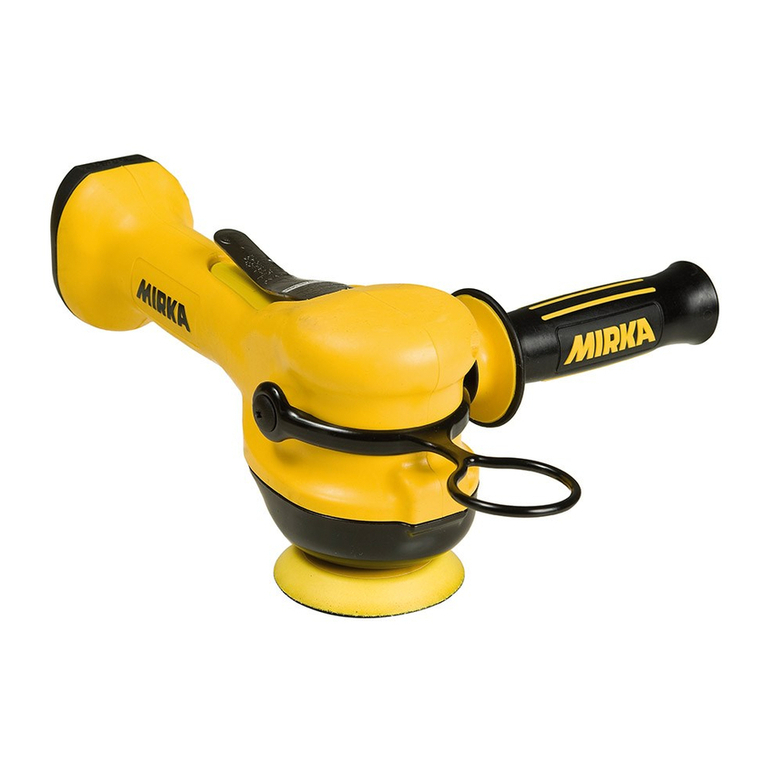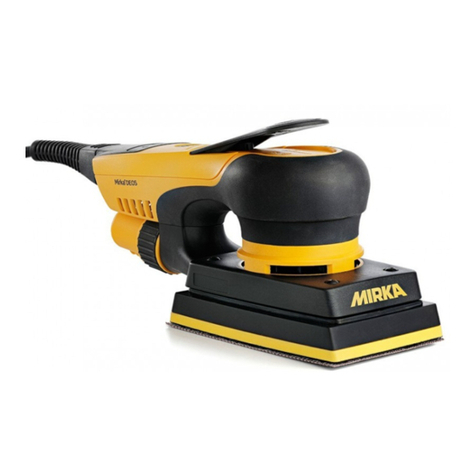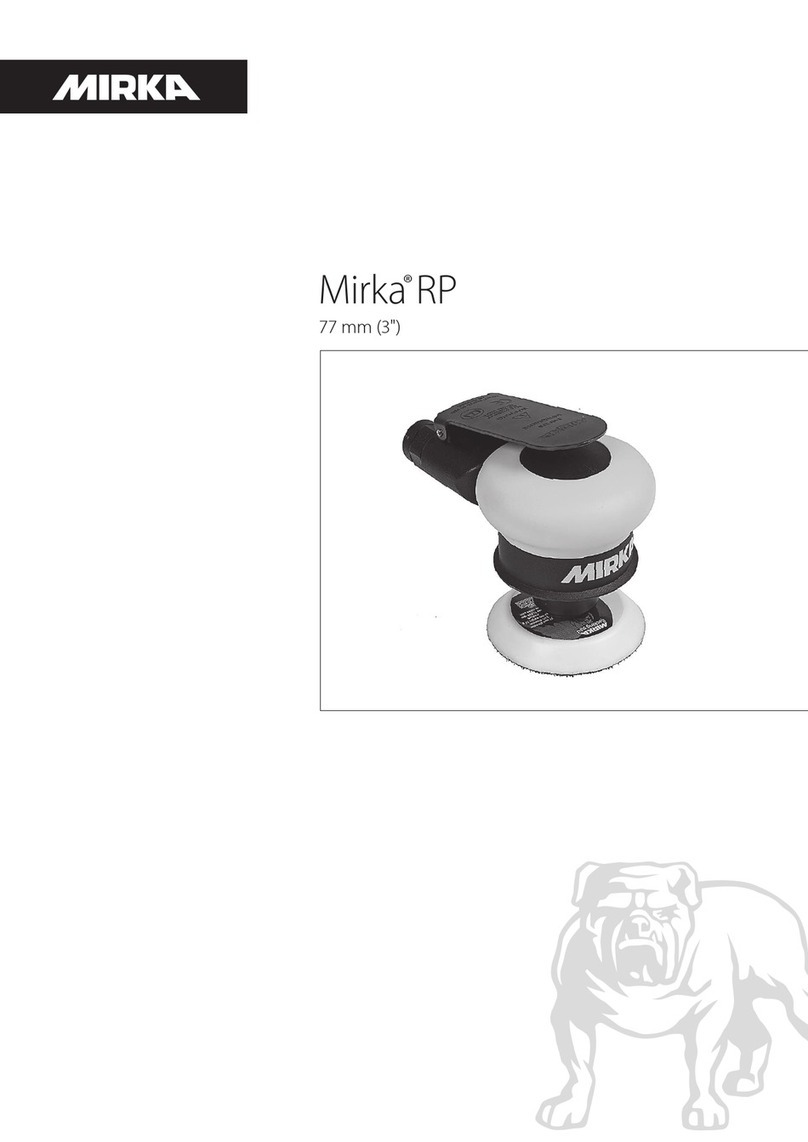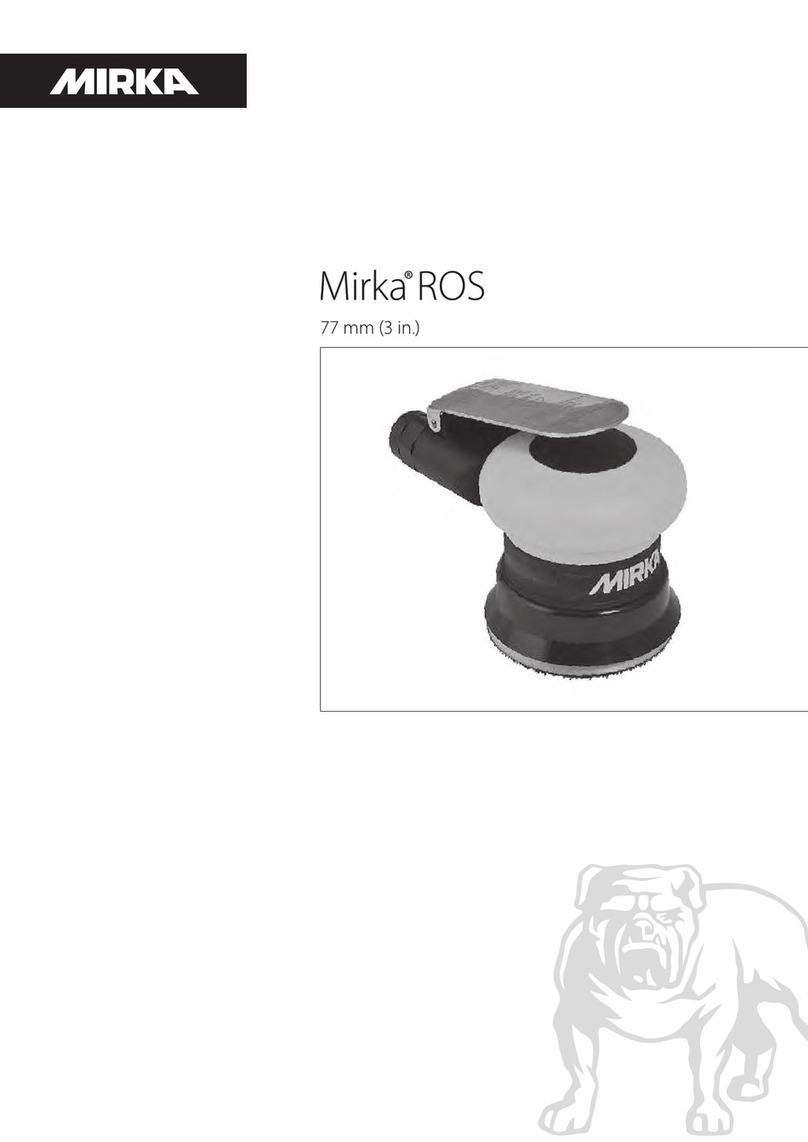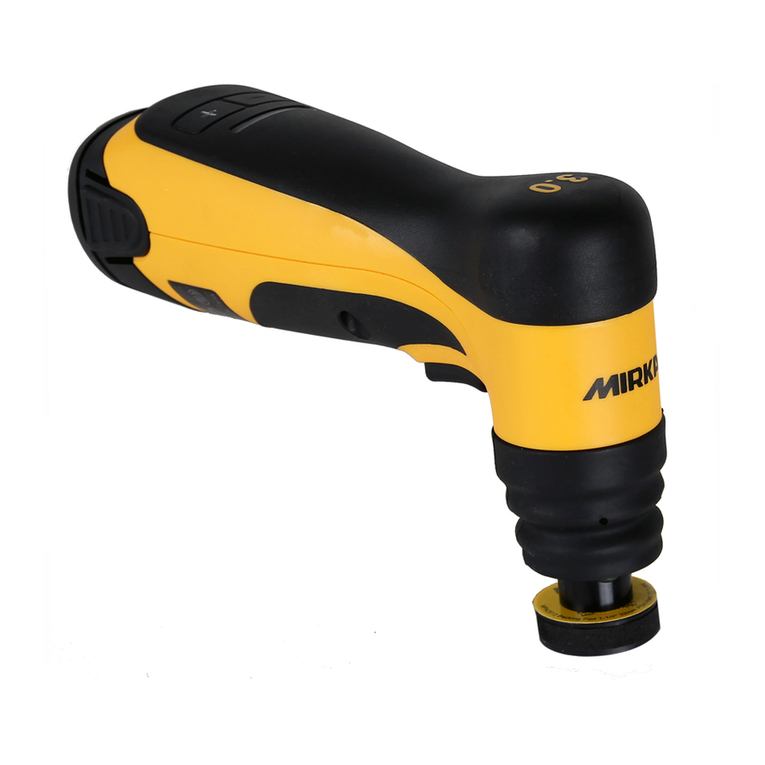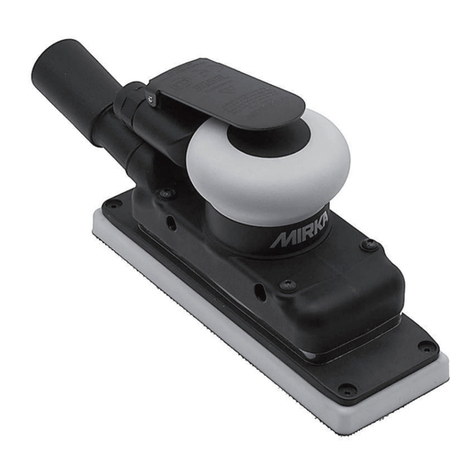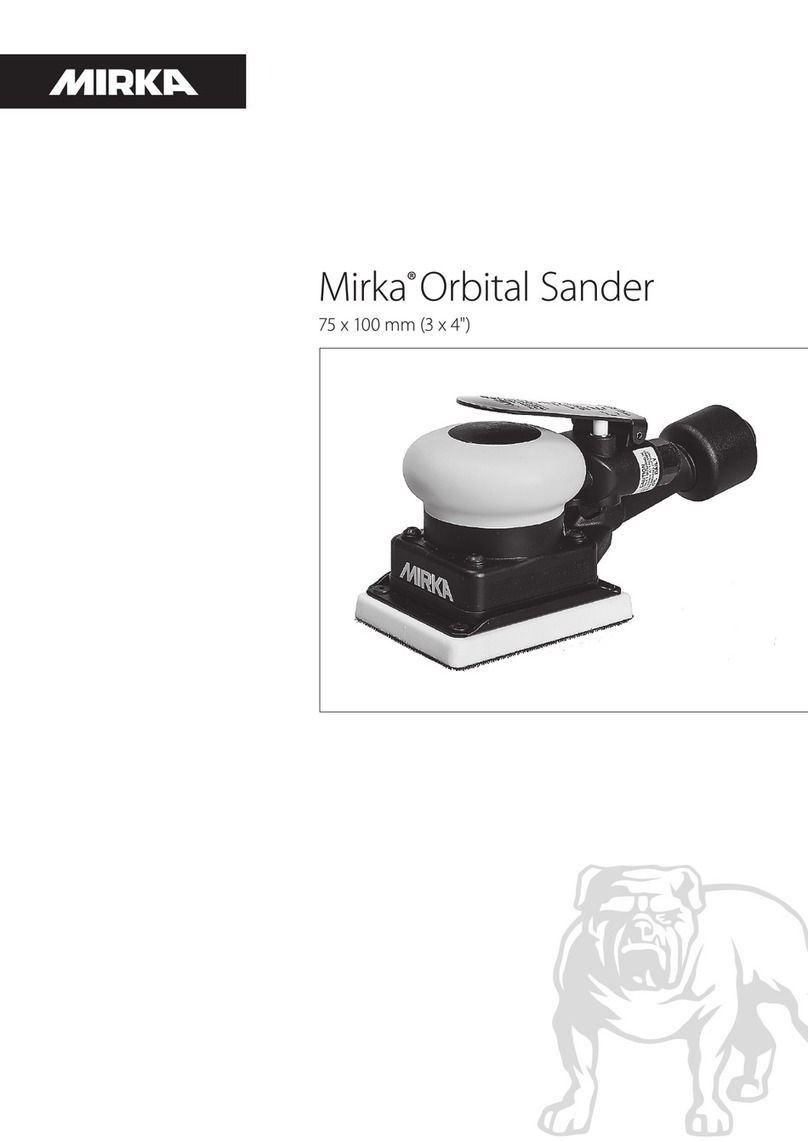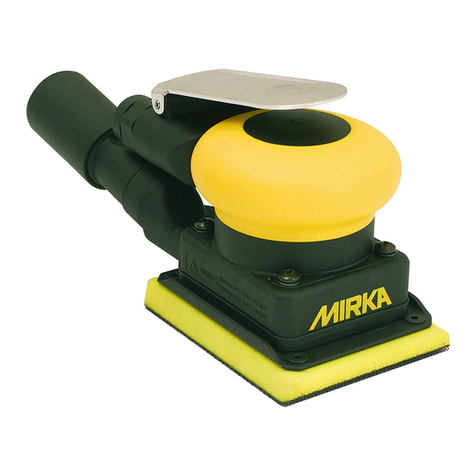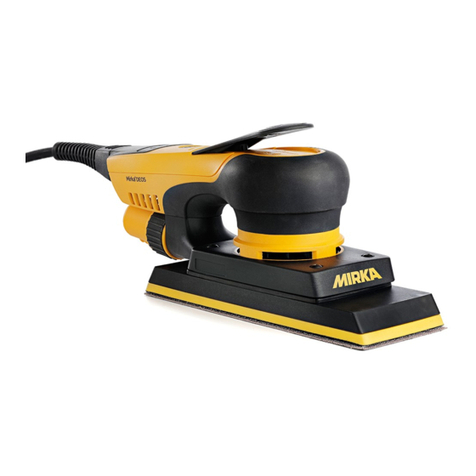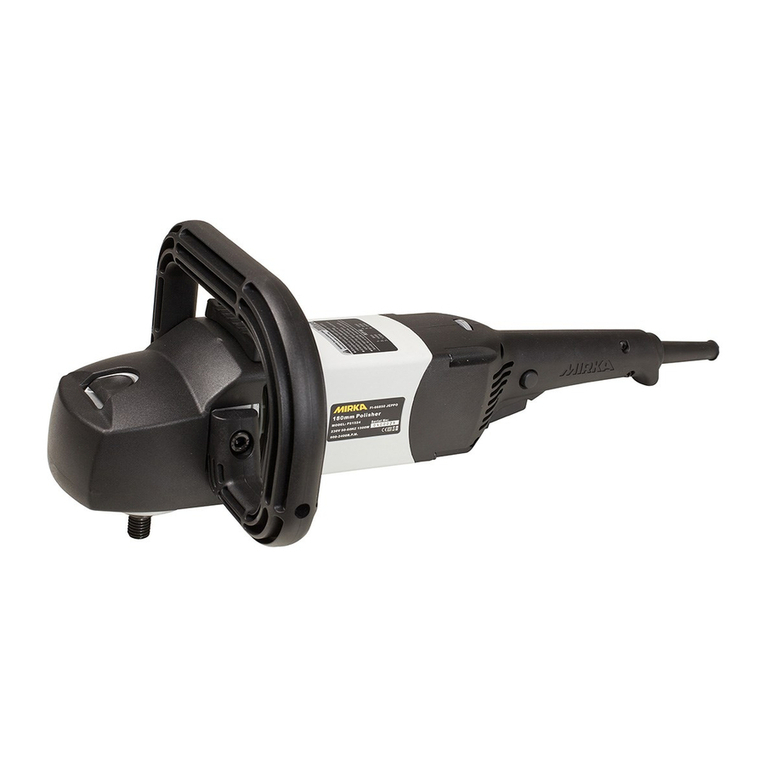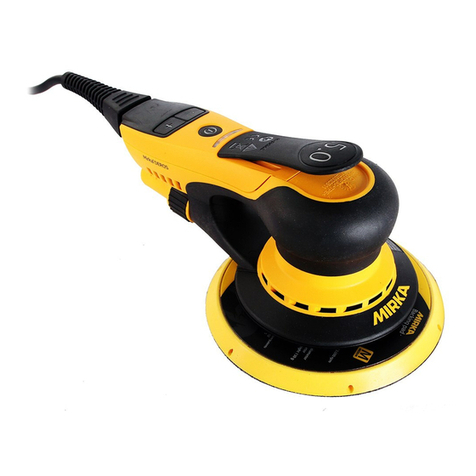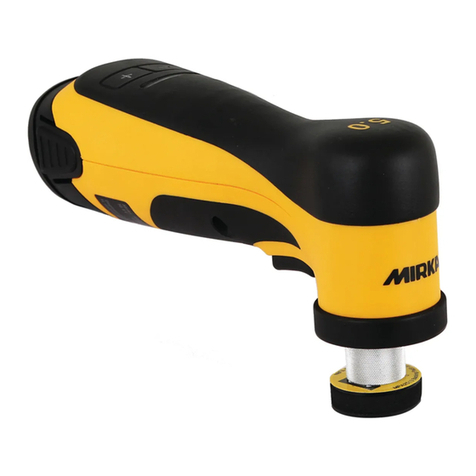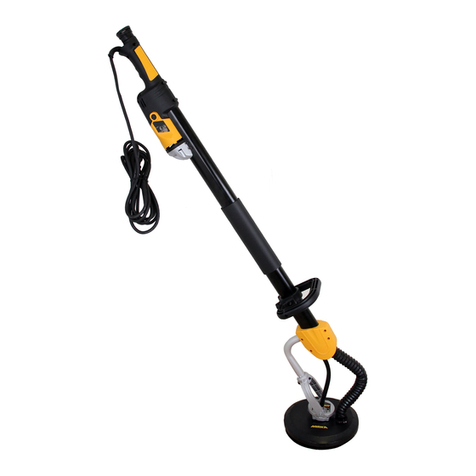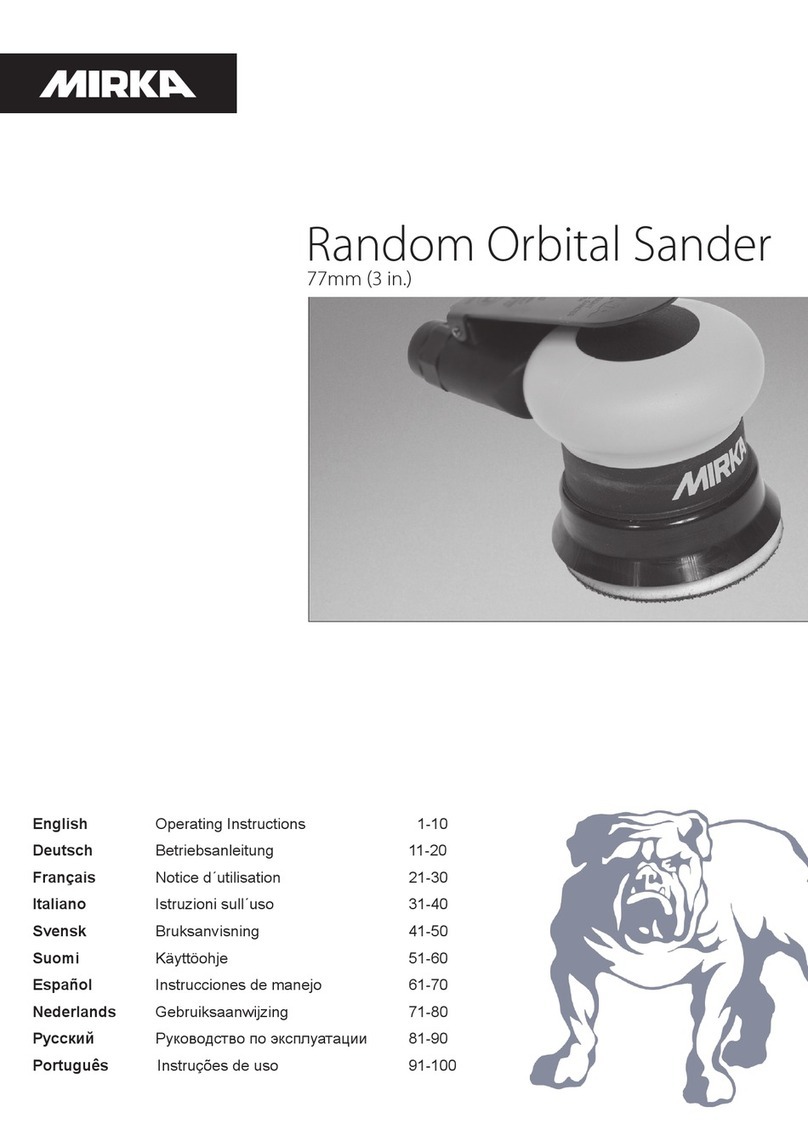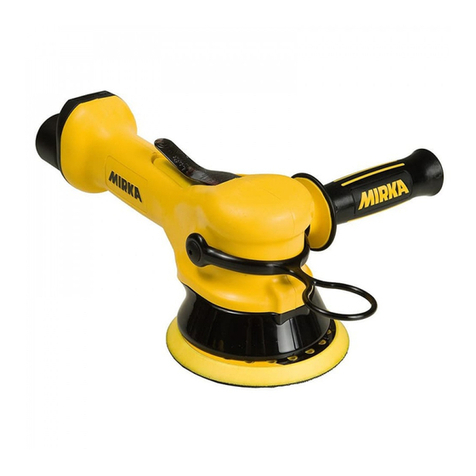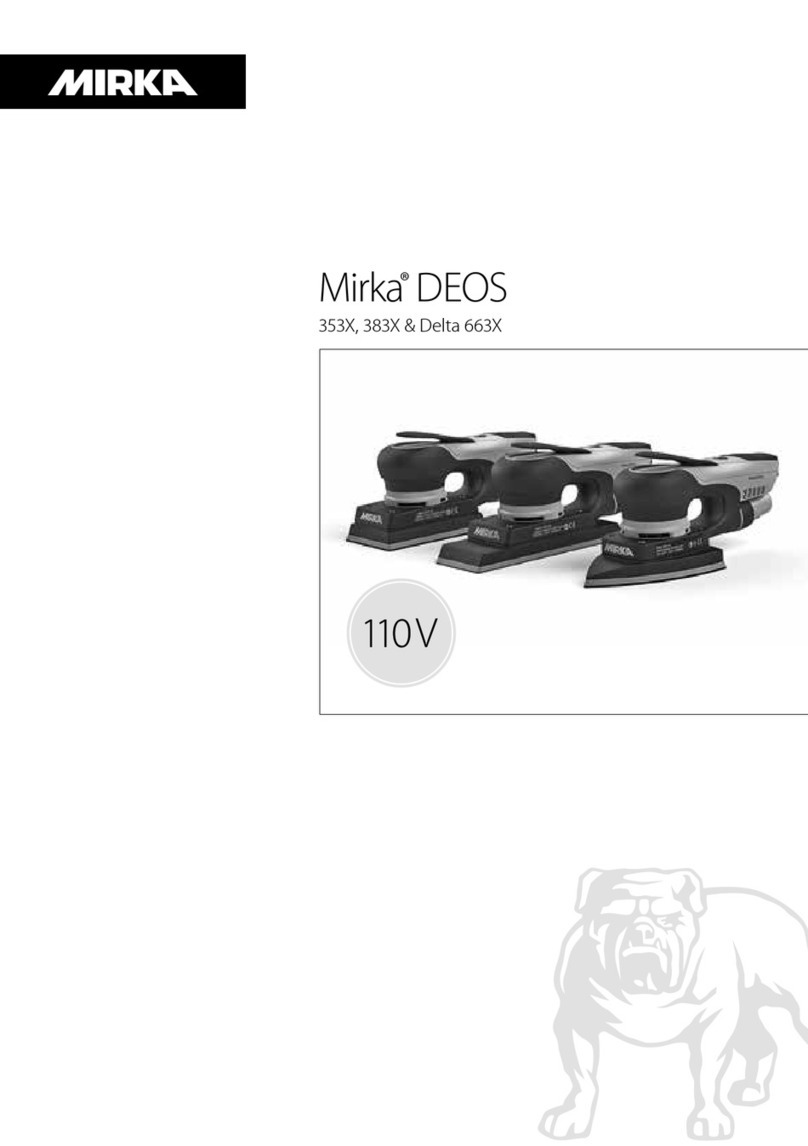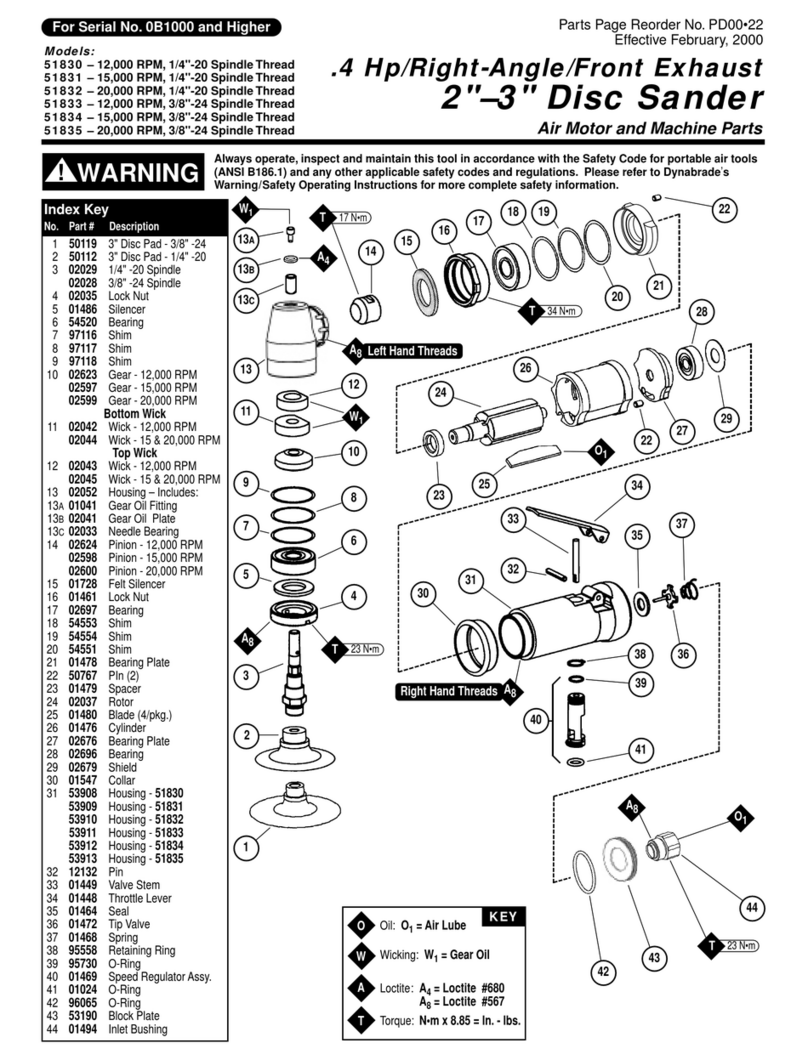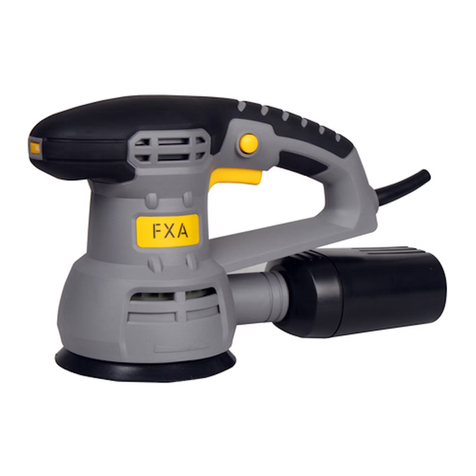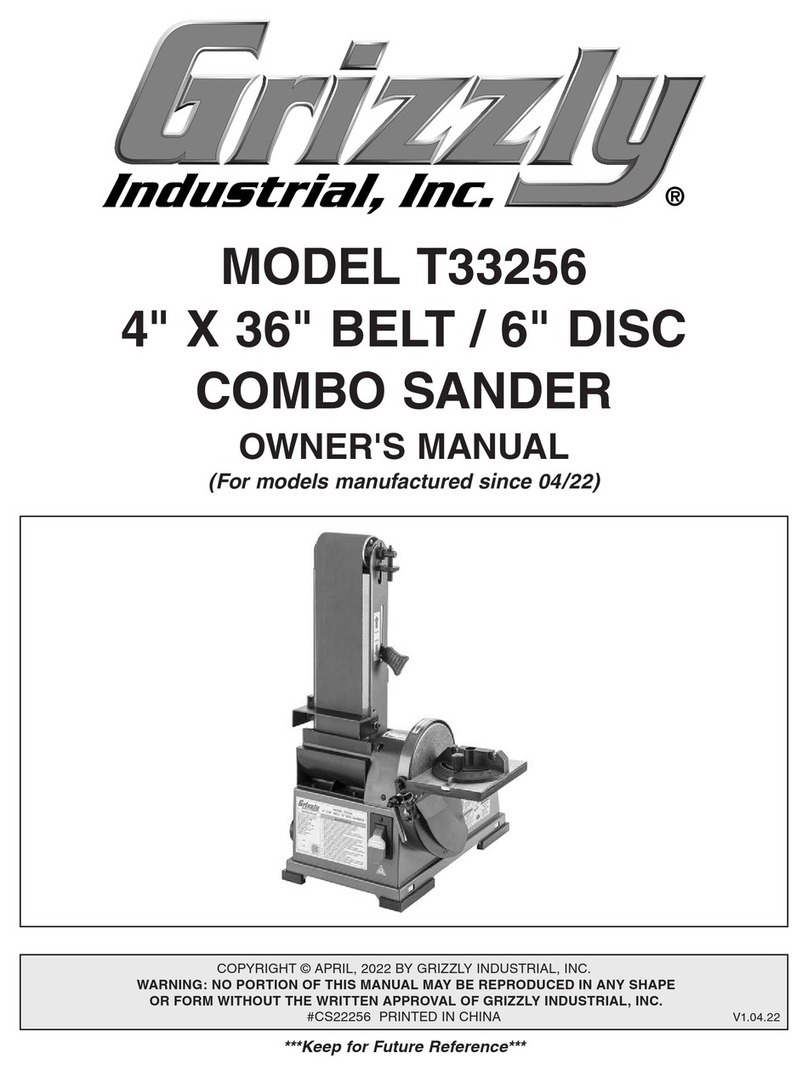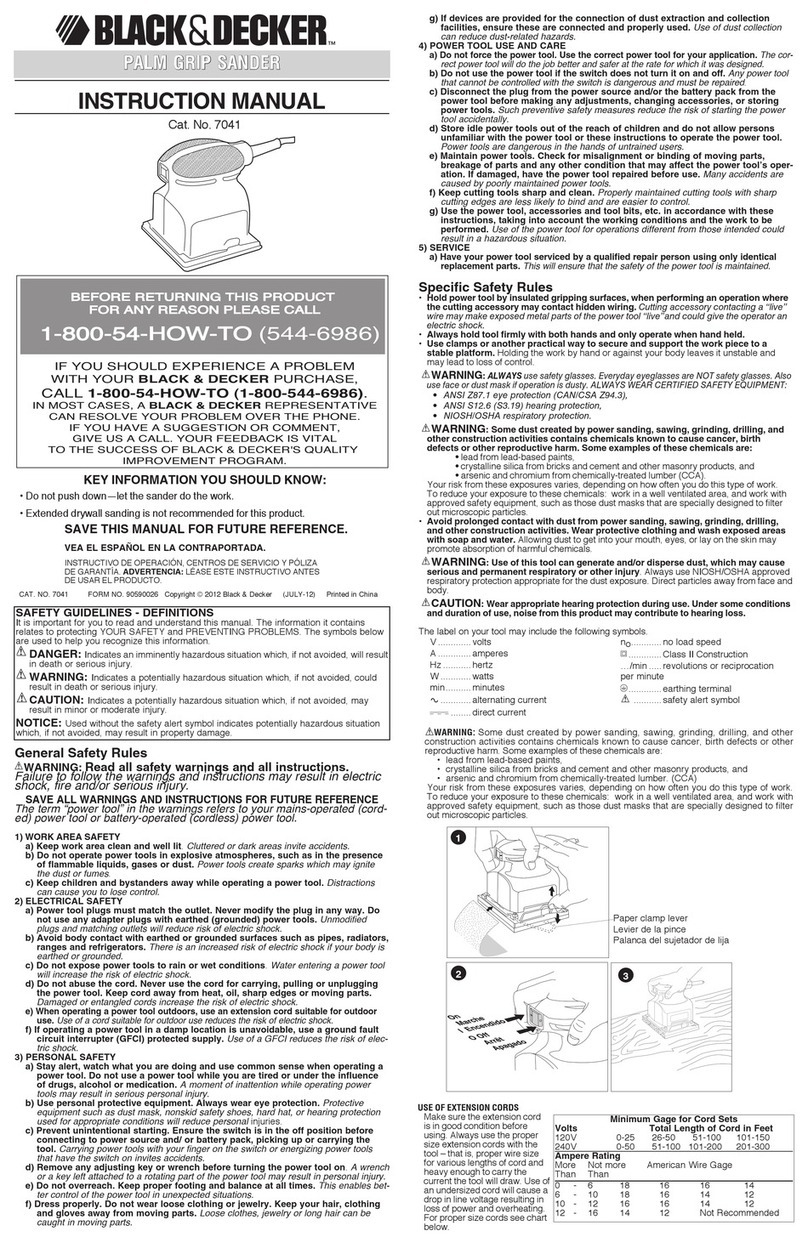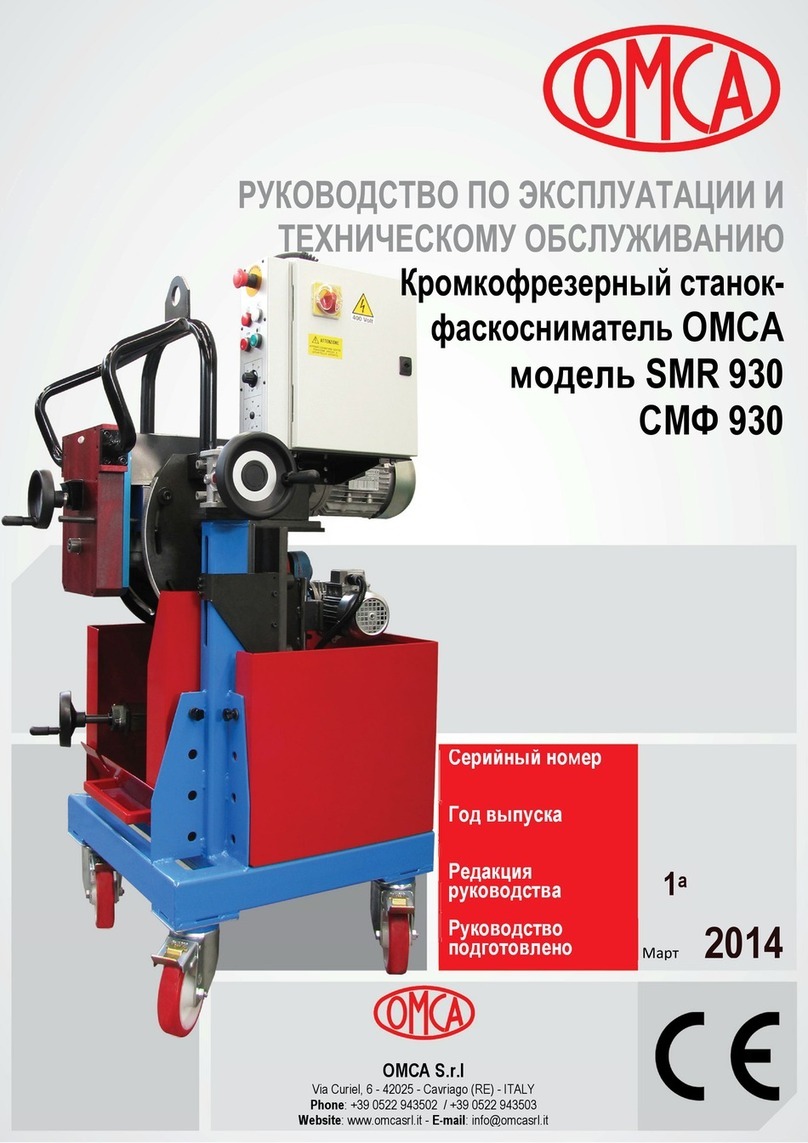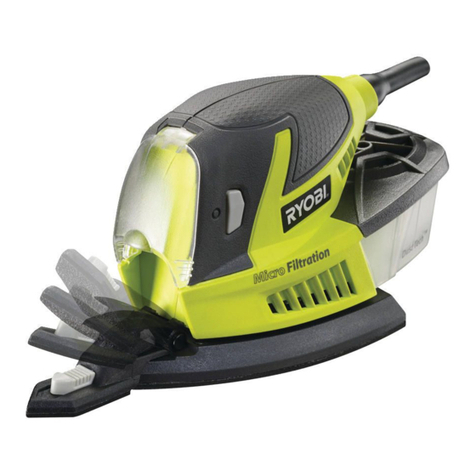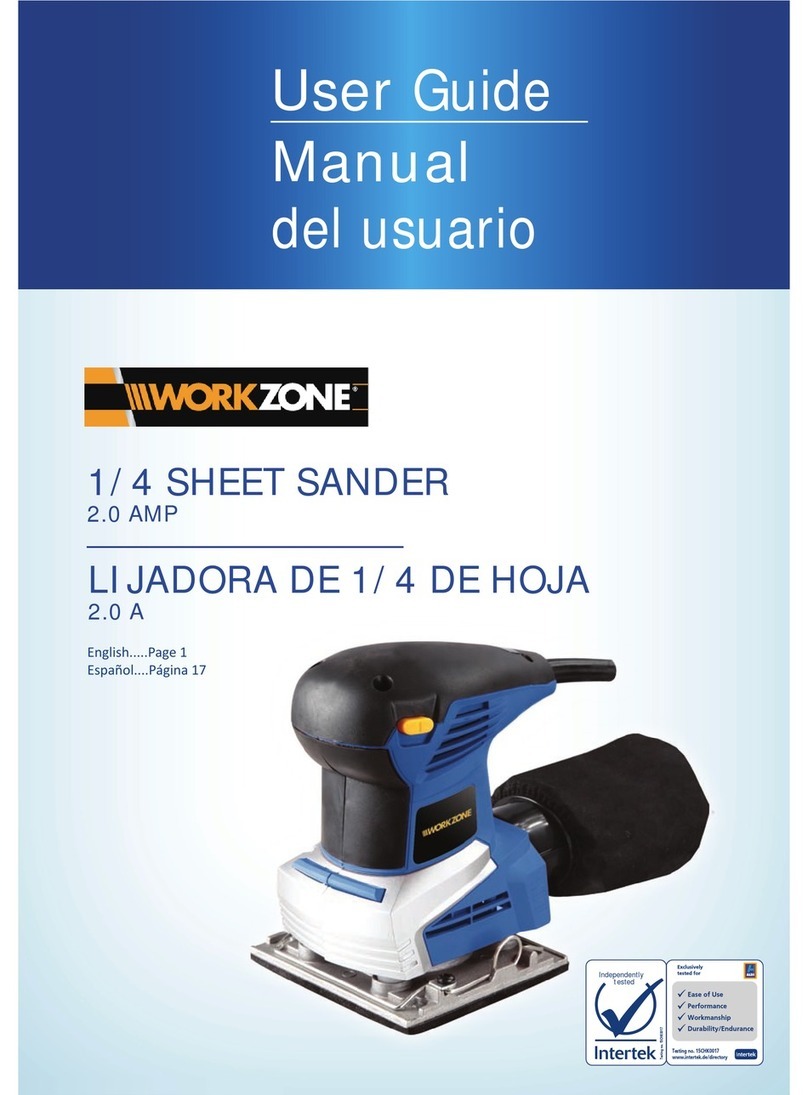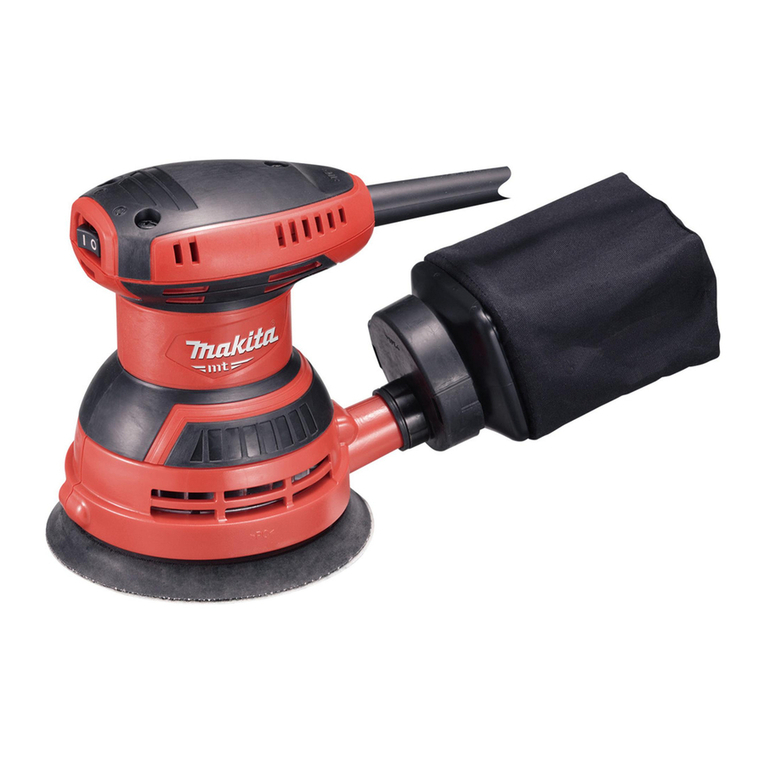8
MIRKA 12,000 RPM
125 mm (5 in.) & 150 mm (6 in.)
RANDOM ORBITAL SANDERS
SERVICE INSTRUCTIONS
NOTICE: To receive any expressed or implied warranty, tool must be repaired by an authorized Mirka Service Center. The following
general service instructions provided are for use after completion of the warranty period.
DISASSEMBLY INSTRUCTIONS
Changing Grips:
1. The(25)Griphastwo“tabs”thatwraparoundthebodyofthe
sander under the inlet and exhaust. Use a small screwdriver
topickoutoneofthe“tabs”oftheGrip,andthencontinueto
go underneath the Grip with the screwdriver and pry the Grip
off of sander. To install a new Grip, hold the Grip by the tabs
making them face outward, align the Grip and slide it under
the (23) Throttle Lever then press the Grip down until it seats
ontothetopofthesander.Makesurethetwo“tabs”seat
under the inlet and exhaust.
Motor Disassembly:
1. Lightly secure the tool in a vise using the (MPA0026) T-7 Soft
Collar or padded jaw vice and remove the (36) pad with the
(35) 24 mm Pad Wrench then remove the Shroud or Skirt
(whichever applies).
2. Remove the (12) Lock Ring with the (MPA0025) T-6 Motor
Lock Ring Wrench/Spindle Puller Tool. The motor assembly
can now be lifted out of the (27) Housing.
3. Secure the motor assembly by clamping the (13) Shaft
Balancer in a padded jaw vise and remove the (1) Retaining
Ring and the (5) O-Ring from the (4) Cylinder.
4. Remove the (3) Rear Endplate. This may require supporting
the(3) Rear Endplate with a (MPA0416) Bearing Separator
and lightly pressing the shaft through the (2) Bearing and
RearEndplate.Removethe(4)Cylinderandtheve(7)
Vanes and (6) Rotor Set from the shaft of the Shaft Balancer.
Remove the (8) Key then press off the (9) Front Endplate
(with [10] Bearing), (11) O-Ring and the (12) Lock Ring. It
may be necessary to remove the Bearing with a Bearing
Separator if it came out of the Front Endplate and stuck to the
shaft of the Shaft Balancer.
5. Remove and discard (61) Dust Shield from the (13) Shaft
Balancer.
6. Remove the bearing(s) from the endplates by using the
(MPA0036) T-8 Bearing Removal Tool to press out the bear-
ings.
Shaft Balancer and Spindle Disassembly:
1. Grip the shaft end of the (13) Shaft Balancer in a padded
vise. With a thin screwdriver pick out the slotted end of the
(21) Retaining Ring and peel out.
2. Screw the threaded end of the (MPA0025) T-6 Motor Lock
Ring Wrench/Spindle Puller Tool into the (22) Spindle until
hand tight. Apply a gentle heat from a propane torch or hot
air gun to the large end of the Balancer Shaft until it is about
100° C (212° F) to soften the adhesive. Do not over heat. Re-
move the Spindle assembly by using the slider to give sharp
outward blows to the Spindle. Allow the parts to cool so they
are safe to handle. Follow one of the appropriate directions
below:
• IftheBearingcomesoutwiththespindle,useasmall
Bearing Separator to remove it. Move onto step 3.
• IftheBearingstaysinthe(13)ShaftBalancer.Follow
steps A - D below.
Procedure for removal of the Bearings from the Shaft
Balancer:
A. Position the Set Screw in the top of the (MPA0059) T-9 12
mm ID Bearing Puller.
B. Make sure the (21) Retaining Ring is removed, then press the
Bearing Puller into the I.D. of Bearing until the Bearing Puller
hits the bottom of the Shaft Balancer.
C. Thread the Set Screw down until it hits the bottom of the (13)
Shaft Balancer or becomes very tight. Grip the shaft end of
the Shaft Balancer in a padded vise.
D. Screw the threaded end of the (MPA0025) T-6 Motor Lock
Ring Wrench/Spindle Puller Tool into the Bearing Puller until
hand tight. Apply a gentle heat from a propane torch or hot
air gun to the large end of the (13) Shaft Balancer to re-heat
it until it is about 100° C (212° F) to soften the adhesive. Do
not over heat. Remove the Bearing by using the slider to give
sharp outward blows to the Bearing Puller. Allow the Bearing
Puller, Bearing and Shaft Balancer to cool. After cooling,
unthread the T-6 Motor Lock Ring Wrench/Spindle Puller
Tool from the Bearing Puller. Back off the set screw. Secure
the Bearing Puller and Bearings in a Bearing Separator and
press out the Bearing Puller.
3. The AirSHIELD™ components are held in place by the light
presstofthe(16)Retainer.Thesecomponentscanbe
damaged during removal and may need to be replaced if
removed. To remove the Retainer, use an O-ring pick or a #8
sheet metal screw to grip and pull out the Retainer. Remove
the (15) Valve and (14) Filter from the bore in the Shaft
Balancer. If the Retainer and Valve were not damaged, they
canbereused.However,theltershouldbereplacedon
re-assembly.
4. Remove the (18) bearing from the (22) Spindle. Remove
the (19) Spacer, (62) Dust Shield and (20) Washer from the
Spindle. Discard Dust Shield.
Housing Disassembly:
1. For Non-Vacuum (NV) and Central Vacuum (CV) machines
follow the steps outlined in Section I below. For Self Gener-
ated Vacuum (SGV) machines follow the steps outlined in
Section III.
I. This section is for NV and CV machines.
A) Unscrewthe(39)MuferHousingfromthe(27)Housing.
B) Removethe(38)Muferfromthe(39)MuferHousingand
removethe(37)MuferinsertfromthecavityoftheMufer
Housing.
C) For NV machines move onto D. For CV machines move onto
Section II.
D) Remove the (32) NV Shroud. Move onto Step 2.
II. This section continued from Section I for CV Exhaust ma-
chines:
A) Remove the (58) Screw, (57) Washer and (55) Nut.
B) Remove the (54 or 56) Swivel Exhaust Assembly from the (33
or 34) Shroud.
C) Remove the (33 or 34) Shroud from the (27) Housing. Move
onto step 2.
III. This section is for SGV Exhaust machines:
A) Unscrew the (45) SGV Retainer with an (MPA0849) 8 mm
hex wrench.
B) Remove the (47) Hose SGV Swivel Exhaust Assembly from
the (27) Housing and (51) SGV Adapter.
C) Pull the SGV Retainer out of the bore of the (47 or 50) Swivel
Exhaust Assembly and remove the two (44) O-Rings.
D) Remove the (33) Vacuum Shroud or (34) Vacuum Skirt from
the (27) Housing. Move onto step 2.
2. Place the (30) Speed Control to the midway position and
remove the (31) Retaining Ring. NOTE: If the machine is a
vacuum model, the vacuum exhaust must be removed (see
Section 1 above for removal) before the (31) Retaining Ring
can be removed with lock ring pliers. The Speed Control will
now pull straight out. Remove the (29) O-Ring.
3. Unscrew the (43) Inlet Bushing Assembly from the (27) Hous-
ing. Remove the (42) Valve Spring, (41) Valve, (40) Valve
